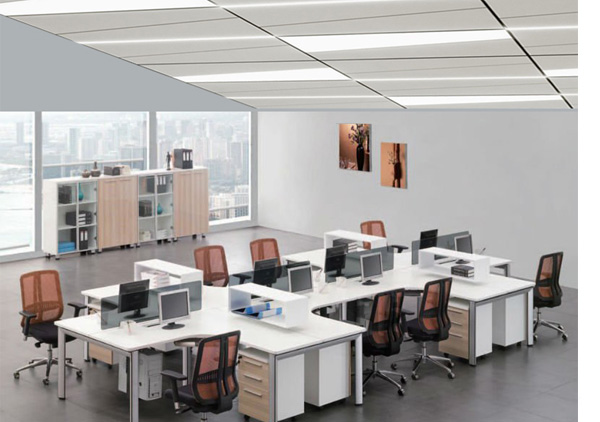CELUKA WPC SHEETS
Introduction
Wood Plastic Composite (WPC)
Thickness.: 6mm to 24mm
Size.: 8'x 4', 7'x 4', 6'x 3'
Density.:
Colour.: White,Black,Brown,Ivory,Grey.
Wood Plastic Composite (WPC) sheet is a type of engineered material that combines wood fibers or flour with thermoplastics to create a versatile and durable sheet material. It is often used as an alternative to traditional wood or plastic materials in various applications.

The composition of WPC sheets may vary, but they typically consist of a mixture of wood fibers or flour (often derived from reclaimed or recycled wood) and a thermoplastic polymer such as polyethylene (PE), polypropylene (PP), or polyvinyl chloride (PVC). The wood fibers provide strength, rigidity, and a natural appearance, while the thermoplastic matrix offers durability, weather resistance, and ease of processing.
The manufacturing process of WPC sheets involves combining the wood fibers/flour with the thermoplastic resin through methods like extrusion or compression molding. Various additives, such as stabilizers, colorants, and UV inhibitors, may be incorporated to enhance the performance and appearance of the final product.
Properties & Benefits
Natural appearance: WPC sheets often have a wood-like appearance, making them visually appealing and suitable for applications where a natural look is desired.
Durability and weather resistance: The combination of wood fibers and thermoplastics results in a material that is resistant to rotting, decay, and insect damage. WPC sheets are also highly resistant to moisture, UV radiation, and harsh weather conditions, making them suitable for outdoor applications.
Dimensional stability: Compared to natural wood, WPC sheets have improved dimensional stability, meaning they are less likely to warp, crack, or deform due to temperature and moisture changes.
Low maintenance: WPC sheets require minimal maintenance, as they do not need to be stained, painted, or sealed like traditional wood. They can be easily cleaned with soap and water.
Versatility: WPC sheets can be cut, drilled, and fastened using standard woodworking tools. They can be molded into various shapes and sizes, allowing for customization and versatility in applications.
Environmentally friendly: The use of recycled wood fibers and thermoplastics in WPC sheets makes them a more sustainable alternative to traditional wood products. They help reduce the demand for virgin wood and promote the utilization of recycled materials.
WPC sheets find applications in a wide range of industries and products, including building and construction (e.g., decking, fencing, siding), outdoor furniture, automotive components, packaging materials, and more.
It's worth noting that the specific properties and performance of WPC sheets can vary depending on the formulation, manufacturing process, and quality of materials used. Therefore, it's important to consider the specific product specifications and consult with manufacturers or suppliers for detailed information and suitability for your intended application.Wood Plastic Composite (WPC) sheet is an innovative and sustainable building material that combines the natural beauty of wood fibers with the durability and versatility of plastic polymers. It is an engineered product made by blending wood fibers or flour with thermoplastic resins to create a sheet-like material. WPC sheets offer a wide range of advantages over traditional wood and plastic materials, making them suitable for various applications in construction, furniture, and other industries.
Composition & Manufacturing
Wood Plastic Composite sheets are typically composed of a mixture of wood fibers or flour, thermoplastic resins (such as polyethylene, polypropylene, or PVC), and additives. The wood fibers provide strength, natural aesthetics, and improve dimensional stability, while the plastic polymers contribute to durability, weather resistance, and easy maintenance. The combination of these components is achieved through a specialized manufacturing process, which involves blending the materials, extruding the mixture into a desired shape, and cooling and cutting the resulting WPC sheets to the desired dimensions.
Properties & Feature
Natural Aesthetics: WPC sheets possess the appealing look and texture of natural wood due to the inclusion of wood fibers. This characteristic allows for a variety of finishes, including wood grain patterns and colors, enhancing the visual appeal of the material in applications such as decking, cladding, and furniture.
Durability and Weather Resistance: The inclusion of plastic polymers in WPC sheets enhances their resistance to moisture, rotting, decay, and insect damage. WPC sheets do not splinter, warp, or crack like traditional wood, making them highly durable and suitable for both indoor and outdoor applications.
Low Maintenance: Unlike natural wood, WPC sheets require minimal maintenance. They do not require regular staining, painting, or sealing to maintain their appearance and performance. WPC sheets can be easily cleaned with soap and water, making them a practical choice for areas that experience high traffic or exposure to environmental elements.
Dimensional Stability: WPC sheets exhibit excellent dimensional stability, minimizing the risk of expansion or contraction due to changes in temperature and humidity. This property ensures the long-term integrity and performance of the material in various applications.
Eco-Friendly: WPC sheets are considered an environmentally friendly alternative to traditional wood and plastic materials. The inclusion of wood fibers reduces the amount of virgin plastic used, while the use of recycled plastic further contributes to resource conservation. Additionally, WPC sheets are recyclable at the end of their lifecycle.
Application
Wood Plastic Composite sheets find diverse applications across industries, including but not limited to:
Decking and Outdoor Flooring: WPC sheets are widely used for decking and outdoor flooring due to their durability, weather resistance, and natural wood aesthetics. They offer a low-maintenance alternative to traditional wood decking, with enhanced resistance to fading, staining, and moisture damage.
Cladding and Siding: WPC sheets can be employed as cladding and siding materials for buildings. They provide an attractive and durable exterior surface that withstands environmental conditions while requiring minimal maintenance.
Furniture and Interior Design: WPC sheets are utilized in furniture manufacturing, such as tabletops, cabinets, and shelves, due to their strength, aesthetics, and ease of fabrication. The material can be shaped, routed, and finished similar to wood, allowing for customized designs.
Fencing and Privacy Screens: WPC sheets can be used for fencing, privacy screens, and partitions. They offer a robust and visually appealing solution that requires minimal upkeep and can withstand exposure to the elements.
Packaging and Industrial Applications: WPC sheets are suitable for various packaging applications, such as crates, pallets, and protective covers. Their durability, lightweight nature, and resistance to moisture make them ideal for industrial use.
Conclusion: Wood Plastic Composite sheets combine the natural beauty of wood fibers with the durability and versatility of plastic polymers, resulting in an innovative and sustainable building material. With their attractive appearance, durability, weather resistance, and low maintenance requirements, WPC sheets have found widespread use in applications ranging from decking and cladding to furniture and packaging. This eco-friendly material offers a viable alternative to traditional wood and plastic, providing a balance between aesthetics, performance, and environmental responsibility.
